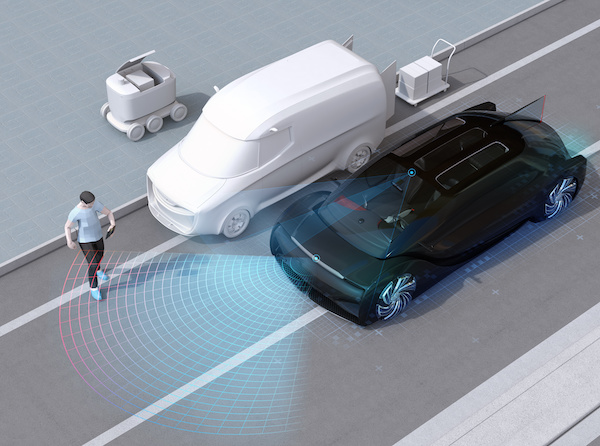
In the ever-evolving landscape of the automotive industry, the pursuit of safety, efficiency, and convenience has led to groundbreaking advancements in technology. Among these innovations, AI-powered/autonomous Driver Assistance Systems (DAS) have emerged as a driving force for both road safety and the eventual realization of fully autonomous vehicles.
Below we will dive, we'll explore the latest advancements in that category, their profound impact on road safety, and how they are setting the stage for a future where our cars will drive themselves.
The Evolution of Driver Assistance Systems
Before we dive into the AI-powered systems of today, let's take a brief look at the evolution of driver assistance technologies. It all began with basic features like cruise control and anti-lock brakes - the first car with cruise control was the 1958 Chrysler Imperial! Then it moved to ADAS (Advanced driver-assistance system). Early iterations of the ADAS included electronic stability control, anti-lock brakes, blind spot monitoring, lane departure warning, adaptive cruise control, and traction control. However, the current generation of DAS has taken a quantum leap forward, thanks to artificial intelligence and sensor technologies.
How Does It Know What To Do?
At the heart of DAS is a complex sensory arsenal. These systems rely on an array of cameras, radar, lidar, ultrasonic sensors, and GPS to perceive the world around the vehicle. This sensory data is then processed by sophisticated AI algorithms that can make split-second decisions, similar to a human driver but with the advantage of being unceasingly vigilant.
Impact on Road Safety
The most compelling aspect of autonomous-driven DAS is their profound impact on road safety. These systems have already demonstrated their ability to significantly reduce accidents caused by human error. Here are some key ways in which they are enhancing safety:
Adaptive Cruise Control (ACC)
ACC uses sensors to maintain a safe following distance and can automatically adjust the car's speed to match traffic conditions. This reduces the likelihood of rear-end collisions due to tailgating or sudden stops.
Lane-Keeping Assist (LKA)
LKA systems use cameras to monitor lane markings and gently steer the car to keep it within the lane. This helps prevent accidents caused by drifting out of lanes.
Emergency Braking Systems
These systems can detect potential collisions and apply the brakes if the driver doesn't respond in time, mitigating or preventing accidents altogether.
Blind Spot Monitoring
Using radar and cameras, this technology alerts drivers to vehicles in their blind spots, reducing the risk of side-impact collisions during lane changes.
The Road Ahead: Towards Full Autonomy
While driver-assistance systems have made driving safer and more convenient, they are also propelling us toward a future of fully autonomous vehicles. As these systems continue to advance, they will handle an increasing portion of the driving tasks, eventually rendering human intervention unnecessary.
ADAS & DAS Service and Repairs!
Your driver assistance systems are all part of your car's electrical ecosystem. This means that if it's having issues or malfunctioning, we at Turner Auto Care can take a look and see what's wrong! Just give us a call and we will be happy to help - your safety is our number one priority.